 
|
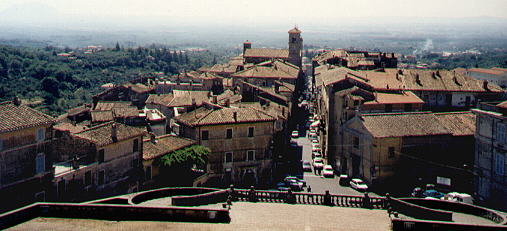 | ||
The town of Caprarola is just a group of houses at the sides of the street leading to the palace. The population was mainly made up of servants and artisans who worked for the Farnese.
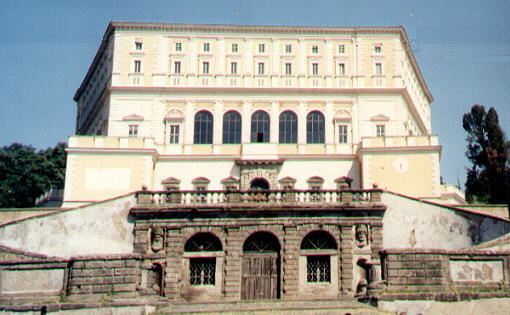 | ||
Palazzo Farnese was initially designed by Baldassarre Peruzzi, but it was actually built by Antonio da Sangallo the Younger (the lower fortress-like part) and by il Vignola (the upper very harmonious pentagonal palace).
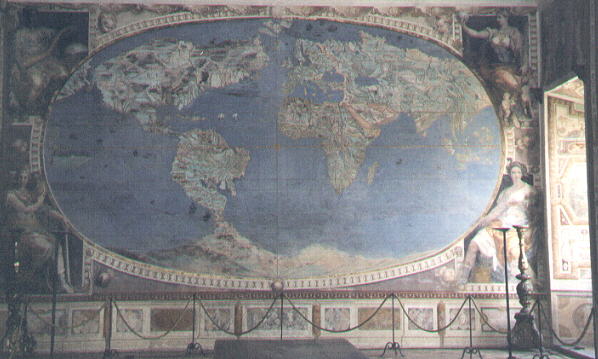 | ||
The Farnese dedicated a large part of their revenue to the decoration of the palace. One of the finest rooms is Sala del Mappamondo (mappamondo = map of the two hemispheres) where the walls are painted with maps of the four continents, Palestine and Italy and with a large map of the world. The map shows a large continent where now we know there is the Antarctic Continent. The Red Sea, in line with the tradition of the early cartographers, is painted in a reddish colour. At the same time (second half of the XVIth century) Pope Gregorius XIII (1572-85) decorated the walls of the corridors of Palazzo Vaticano with the maps of Italy.
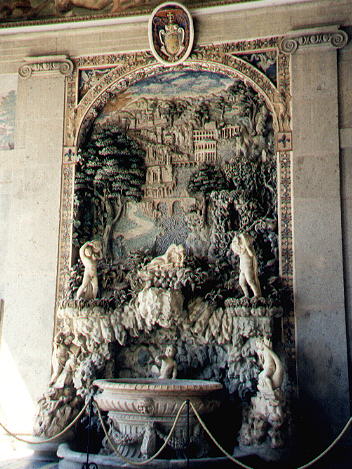 | ||
Mannerist (late Renaissance) artists are said to have had horror vacui, fear of empty spaces. The palaces they designed and decorated do not have a square inch without a stucco or a grotesque.
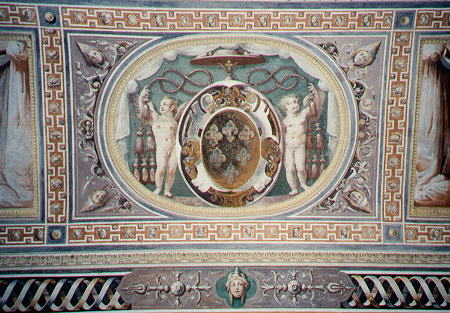 | ||
Carbognano and Fabrica
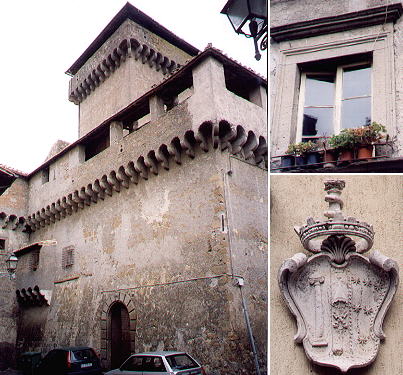 | ||
Carbognano most likely owes its name to its charcoal (carbone = coal). Today it has a reputation for its hazel-nuts. The little town is dominated by a castle, which was acquired by the Colonna family after the fall of the Farnese. This branch of the Colonna family had also another (much larger) fief: Palestrina. The coat of arms here above shows also the six stars of Pope Clemens X (1670-76) of the Altieri family.
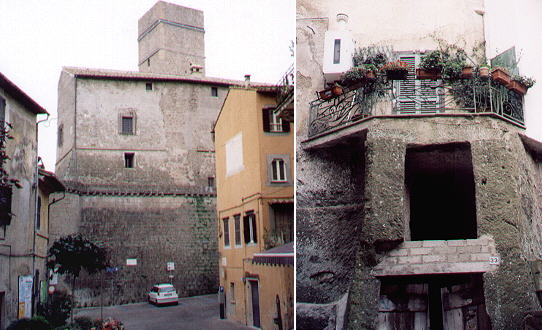 | ||
The Farnese ruled also over Fabrica, a little town built on a tufa hill. In some houses it is difficult to say where the excavation of the tufa ends and the brickwork begins. Also Fabrica has a small castle with a high watch tower.
Around Monte Cimino - other pages:
Ronciglione
Corchiano, Vignanello and Vallerano
Soriano al Cimino
some other walks:
Walks with Ferdinand Gregorovius in the Roman countryside
In and about Viterbo
From Civitavecchia to Civita Castellana
A walk to Porta Furba
Via Appia Antica from Cecilia Metella to Torre in Selci
Via Appia Antica from Torre in Selci to Frattocchie
See my Home Page on Baroque Rome or my Home Page on Rome in the footsteps of an XVIIIth century traveller
All images © 1999 - 2003 by Roberto Piperno. Write to romapip@quipo.it
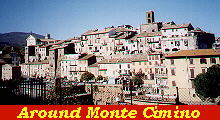 Caprarola, Carbognano and Fabrica
Caprarola, Carbognano and Fabrica